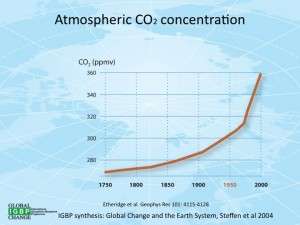An overview of President Obama's climate proposal

The evidence of climate change is all around us – in the melting icecaps, rising global temperature, and the warming oceans. The International Energy Agency cautions that we need to reduce our consumption of fossil fuels, or damage to our climate will be irreversible. Despite the serious danger that accompanies our changing climate, the United States and the international community have been slow to address this issue. That changed for the United States on June 2, when President Obama and the Environmental Protection Agency (EPA) announced a new plan to counter climate change by regulating carbon emissions. On June 23, the Supreme Court voted to allow the EPA to regulate greenhouse gases; this decision grants the EPA the legal ability to implement and enforce the proposal, though it has a long road of revision and review ahead.
This climate plan is the most significant and comprehensive piece of environmental policy in decades. Long awaited and long overdue, President Obama's proposal signals that the United States both takes climate change seriously and is ready to act against it. The hope is that the United States will lead the international community in reducing the global carbon footprint and in combating climate change as a whole. The proposal, a hefty 645 pages, sets guidelines for states to follow regarding greenhouse gas emissions. How would this rule work? How will it affect our carbon footprint, our climate, and our international community? And is it enough to make a difference?
The goal of this plan is to lower carbon emission rates on a state-by-state basis. The plan targets power plants, which make up approximately one third of all greenhouse gas emissions in the United States. Each state will receive a reduction goal tailored to its conditions. The EPA generated each state's goal by considering its present carbon-cutting strategies, its investment in renewable energy, its fuel mix, and its electricity efficiency programs, to name a few. The plan accounts for regional variation by allowing states to devise their own way of meeting the EPA emissions cut. The state will be given their goal and told to reach it, in whichever manner that suits them, by the year 2030. According to the EPA, "This rule would achieve CO2 emission reductions from the power sector of approximately 30 percent from CO2 levels in 2005."

The states will lower their emissions in accordance with set EPA guidelines – a partnership provided by the Clean Air Act section 111(d). These guidelines lay out what exactly should comprise the states' plans, the leeway they have in developing them, and their submission and implementation flexibility. The versatility of these guidelines is meant to accommodate the states' diverse energy policies. The states have a slew of options to choose from when developing their agenda – the EPA is not proposing a "one sizes fits all" plan. The agency says within its proposal that, "Using the flexibilities inherent in Clean Air Act 111(d), this proposal would result in significant reductions of greenhouse gas emissions that cause harmful climate change, while providing states with ample opportunity to design plans that use innovative, cost-effective strategies that take advantage of investments already being made in programs and measures that lower the carbon intensity of the power sector and reduce greenhouse gas emissions."
The EPA estimates that this plan will not only help our climate, but our economy, too. According to EPA projections, the proposal would increase industrial efficiency, lowering energy costs and leading to a healthier, more robust economy. By 2030, energy bills could be lowered by as much as 8 percent. The plan could also save the United States money in the long run, by leading to public health and climate benefits, valued at $55 billion to $93 billion. The EPA estimates it will cost $7.3 billion to $8.8 billion to implement this plan. The EPA states, "Based upon the foregoing, it is clear that the monetized benefits of this proposal are substantial and far outweigh the costs."
Some onlookers applaud this proposal while others critique it. Dr. Steven Cohen, Executive Director of Columbia University's Earth Institute, does both. In his article "Two Cheers for President Obama's Proposed Climate Regulation," Cohen asserts that regulating fossil fuels is symbolic, but will not help alleviate climate change. Cohen says, "The goal should be to make fossil fuels irrelevant. Fossil fuels need to become the energy equivalent of the eight-track tape. They need to be driven from the marketplace by a better source of energy. By 'better' I mean lower-priced, reliable and less of a threat to our ecosphere." Despite the futility of the President's proposal, argues Cohen, it is nonetheless symbolic: it intimates that the United States recognizes climate change as a global threat.
Source: Columbia University




















